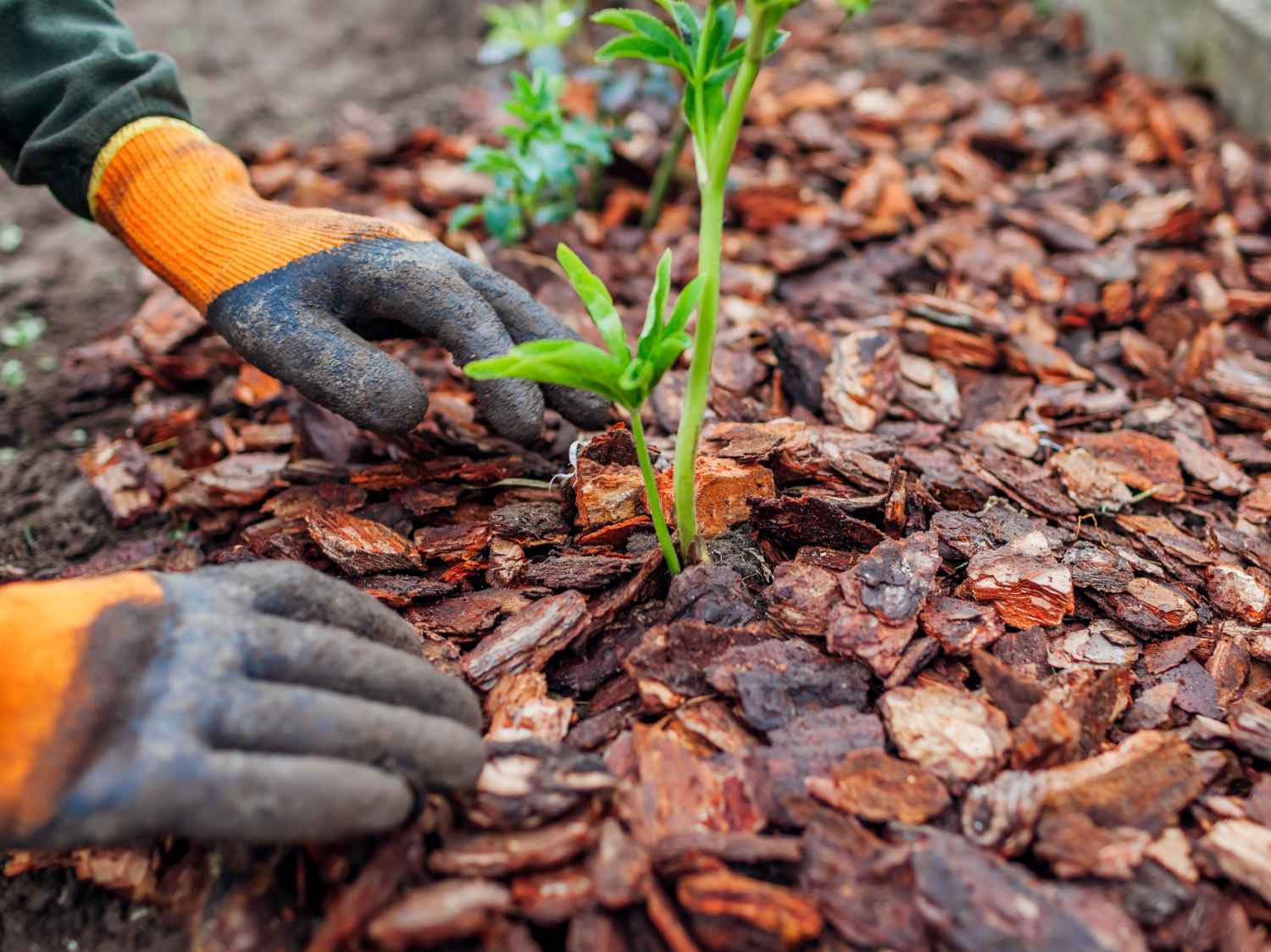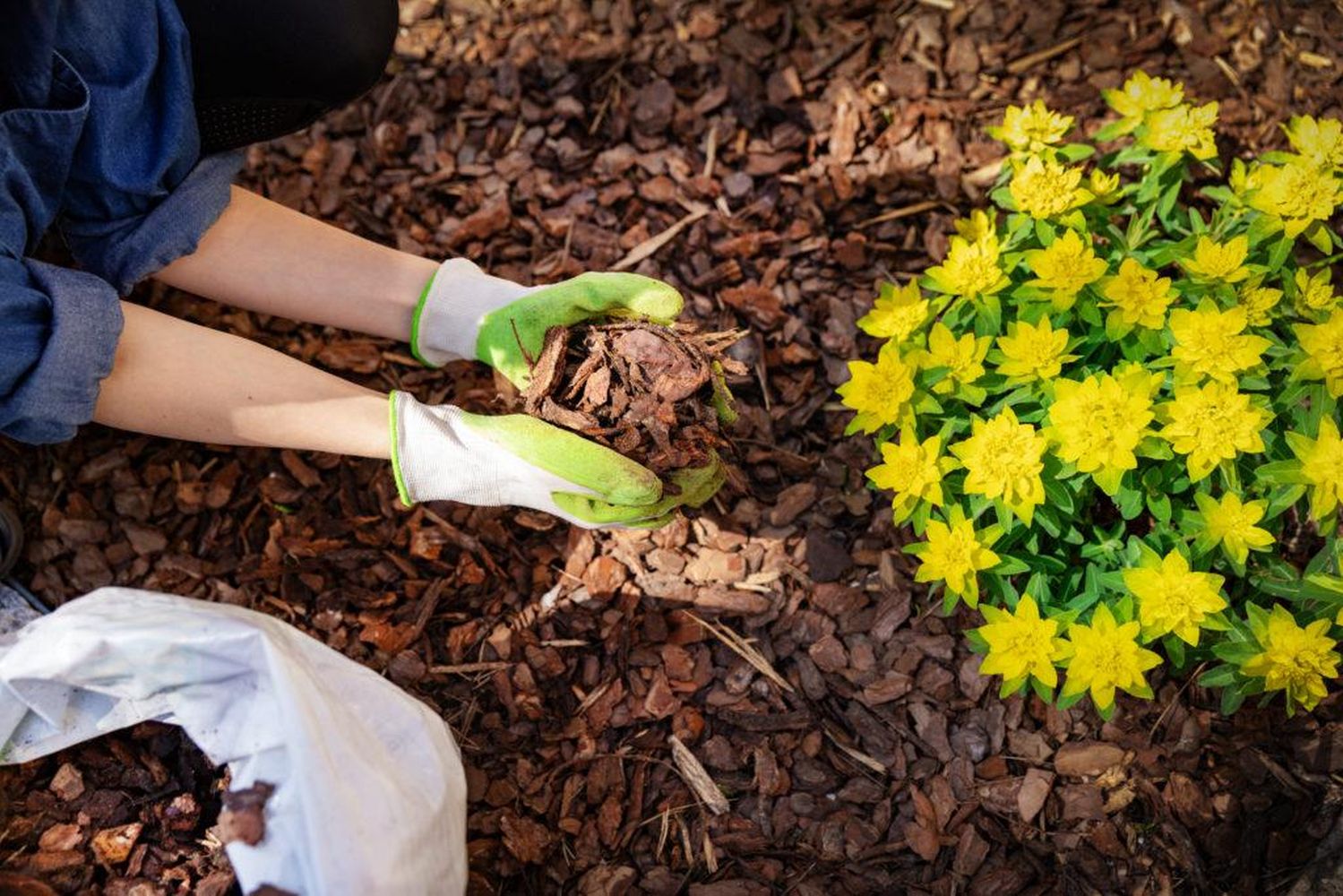“`html
The Comprehensive Guide to Pine Bark Mulch
The Comprehensive Guide to Pine Bark Mulch
Pine bark mulch, a staple in gardening and landscaping, offers a multitude of benefits that contribute to healthy plant growth and aesthetically pleasing outdoor spaces. This article delves into the intricacies of pine bark mulch, exploring its types, applications, advantages, disadvantages, and best practices for its use.
Understanding Pine Bark Mulch
Pine bark mulch is derived from the outer layer of pine trees, primarily sourced from softwood varieties like Scots pine, loblolly pine, and slash pine. This natural material is harvested as a byproduct of the timber industry, making it a sustainable and readily available resource. The bark undergoes processing, including chipping, shredding, or grinding, to create various textures and sizes suitable for different landscaping needs.
Types of Pine Bark Mulch

Pine bark mulch is available in several forms, each with unique characteristics:
Fine Pine Bark Mulch
Fine pine bark mulch consists of small, finely shredded pieces. It decomposes relatively quickly, enriching the soil with organic matter. This type is ideal for delicate plants, flower beds, and areas where a refined appearance is desired.
Medium Pine Bark Mulch
Medium pine bark mulch features slightly larger pieces than the fine variety. It offers a balance between decomposition rate and longevity. This versatile mulch is suitable for a wide range of applications, including shrub beds, pathways, and general landscaping.
Large Pine Bark Nuggets
Large pine bark nuggets consist of coarse, chunky pieces of bark. They decompose slowly, providing long-lasting ground cover and weed suppression. This type is ideal for sloped areas, erosion control, and areas where a rustic, natural look is preferred.
Pine Bark Fines

Pine bark fines are the smallest particles, almost compost like, and are perfect for amending soil and potting mixes, as well as very fine top dressings.
Benefits of Using Pine Bark Mulch
Pine bark mulch offers numerous benefits that make it a popular choice among gardeners and landscapers:
Weed Suppression
A thick layer of pine bark mulch acts as a barrier, preventing sunlight from reaching weed seeds and inhibiting their germination. This reduces the need for manual weeding and herbicide applications.
Moisture Retention
Pine bark mulch helps retain soil moisture by reducing evaporation. This is particularly beneficial in hot, dry climates or during periods of drought. It keeps the soil consistently moist, promoting healthy plant growth.
Temperature Regulation

Pine bark mulch acts as an insulator, protecting plant roots from extreme temperature fluctuations. It keeps the soil cooler in summer and warmer in winter, creating a more stable environment for plant growth.
Soil Acidification
As pine bark mulch decomposes, it releases acids that gradually lower the soil pH. This is beneficial for acid-loving plants such as azaleas, rhododendrons, and blueberries. However, it’s essential to monitor soil pH and adjust it as needed for other plant varieties.
Erosion Control
Pine bark mulch helps prevent soil erosion by stabilizing the soil surface. This is particularly important on sloped areas or in areas prone to heavy rainfall. The mulch acts as a barrier, preventing soil from being washed away.
Organic Matter Enrichment
As pine bark mulch decomposes, it adds organic matter to the soil, improving its structure, fertility, and water-holding capacity. This enhances soil health and promotes vigorous plant growth.
Aesthetic Appeal
Pine bark mulch adds a natural, rustic aesthetic to landscapes. Its rich brown color and textured surface enhance the visual appeal of gardens and outdoor spaces.
Potential Drawbacks of Pine Bark Mulch
While pine bark mulch offers numerous benefits, it’s essential to be aware of potential drawbacks:
Soil Acidification Concerns
While soil acidification can be beneficial for acid-loving plants, it can be detrimental to other plant varieties. Regular soil testing is crucial to monitor pH levels and make necessary adjustments.
Potential for Nitrogen Depletion
As pine bark mulch decomposes, it can temporarily tie up nitrogen in the soil. This can lead to nitrogen deficiency in plants, especially during the initial stages of decomposition. Adding nitrogen-rich fertilizers can mitigate this issue.
Fire Hazard
Dry pine bark mulch can be flammable, posing a fire hazard, particularly in dry climates or during periods of drought. Proper watering and maintenance can minimize this risk.
Cost Considerations
Pine bark mulch can be more expensive than other types of mulch, such as wood chips or straw. However, its longevity and numerous benefits often justify the cost.
Potential for Pest Harboring
If not properly stored or maintained, pine bark mulch can harbor pests such as termites, ants, and slugs. Proper storage and regular inspection can help prevent pest infestations.
Best Practices for Using Pine Bark Mulch
To maximize the benefits of pine bark mulch and minimize potential drawbacks, follow these best practices:
Proper Application
Apply a 2-4 inch layer of pine bark mulch around plants, ensuring it doesn’t touch the plant stems or trunks. This allows for proper air circulation and prevents rot.
Soil Testing
Regularly test soil pH levels, especially when using pine bark mulch around acid-sensitive plants. Adjust soil pH as needed using lime or other amendments.
Nitrogen Supplementation
Apply nitrogen-rich fertilizers or compost to compensate for potential nitrogen depletion during the initial stages of mulch decomposition.
Proper Watering
Water plants thoroughly after applying pine bark mulch to ensure proper moisture penetration. Monitor soil moisture levels and adjust watering frequency as needed.
Regular Maintenance
Replenish pine bark mulch as needed to maintain a consistent layer and ensure ongoing weed suppression and moisture retention. Remove any decomposing mulch to prevent pest infestations.
Storage Considerations
Store pine bark mulch in a dry, well-ventilated area to prevent mold growth and pest infestations. Cover the mulch with a tarp to protect it from rain and moisture.
Choosing the Right Type
Select the appropriate type of pine bark mulch based on the specific needs of your plants and landscape. Fine mulch is ideal for delicate plants and flower beds, while large nuggets are suitable for sloped areas and erosion control.
Applications of Pine Bark Mulch
Pine bark mulch is a versatile material with a wide range of applications:
Flower Beds
Pine bark mulch enhances the aesthetic appeal of flower beds while suppressing weeds and retaining moisture. Fine mulch is particularly suitable for delicate flowers.
Shrub Beds
Pine bark mulch provides a natural backdrop for shrubs, suppressing weeds and regulating soil temperature. Medium mulch is ideal for shrub beds.
Tree Rings
Pine bark mulch around tree trunks helps retain moisture, suppress weeds, and protect the bark from damage. Large nuggets are suitable for tree rings.
Pathways
Pine bark mulch creates natural, soft pathways that are comfortable to walk on. Medium or large mulch is suitable for pathways.
Sloped Areas
Pine bark mulch helps prevent soil erosion on sloped areas. Large nuggets are particularly effective in stabilizing the soil.
Vegetable Gardens
Pine bark mulch can be used in vegetable gardens to suppress weeds, retain moisture, and regulate soil temperature. Ensure the mulch is free from harmful chemicals or treatments.
Play Areas
Pine bark mulch can be used as a soft, natural ground cover in play areas, providing a safe and comfortable surface for children.
Conclusion
Pine bark mulch is a valuable resource for gardeners and landscapers, offering numerous benefits that contribute to healthy plant growth and aesthetically pleasing outdoor spaces. By understanding the different types, applications, advantages, and disadvantages of pine bark mulch, and by following best practices for its use, you can maximize its benefits and create a thriving, beautiful landscape. Remember to consider your specific plant needs and soil conditions when selecting and applying pine bark mulch. Regular maintenance and monitoring are essential for ensuring optimal results.
“`

:max_bytes(150000):strip_icc()/gerber-daises-4121360-hero-bfd1a98e8bb44c45891b84d9df63b5ac.jpeg?resize=200,135&ssl=1)

